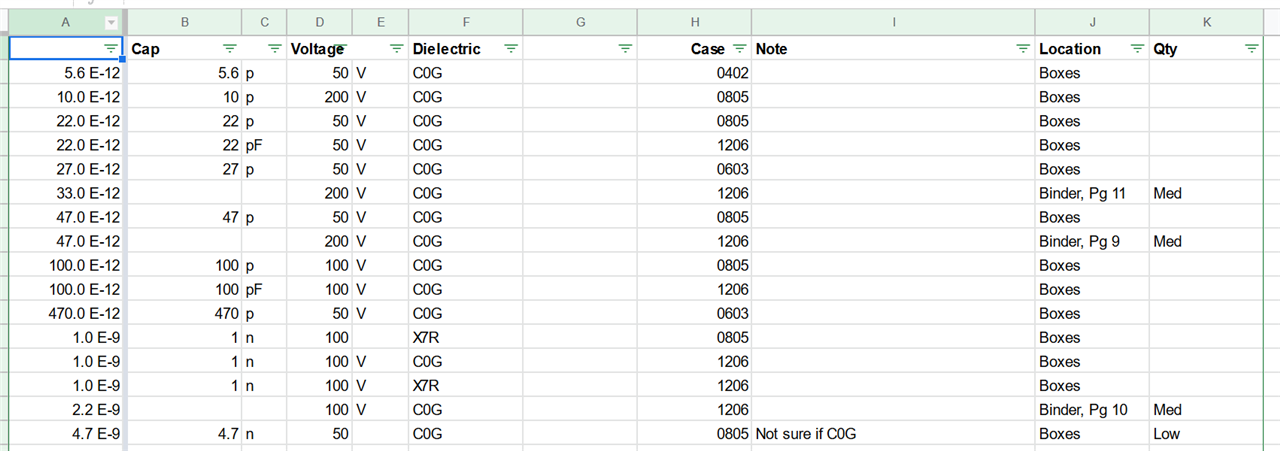I was just wondering, how do you keep track of components on a personal lab?
I started by simply not doing it but pretty quickly found myself searching among an increasing amount of small component bags in search of the most close resistor value or the best op. amp. I have on hand for the job. For general passive components (resistor and capacitor) I've bought a couple of cheap kits but I suppose they were too cheap because values are scattered without an apparent logic (some E12 component, some E24 value, missing E12 values etc...).
I then started tracking available components in a simple Excel table and that for me was a big step forward: I could search any available component at "design stage" without needing to bring out the component box. A couple hours of inventory once saves me from needing to search among bags of component each time I'm designing something or drawing a scheme.
Less than a month ago I switched from Excel to "DB Browser for SQLite". I'm still learning it and using at most basic level but I'm quite pleased with the result even at this early stage.
This is my experience so far and I'm not regretting doing it. What's your experience on this matter? Do you have any hints?


